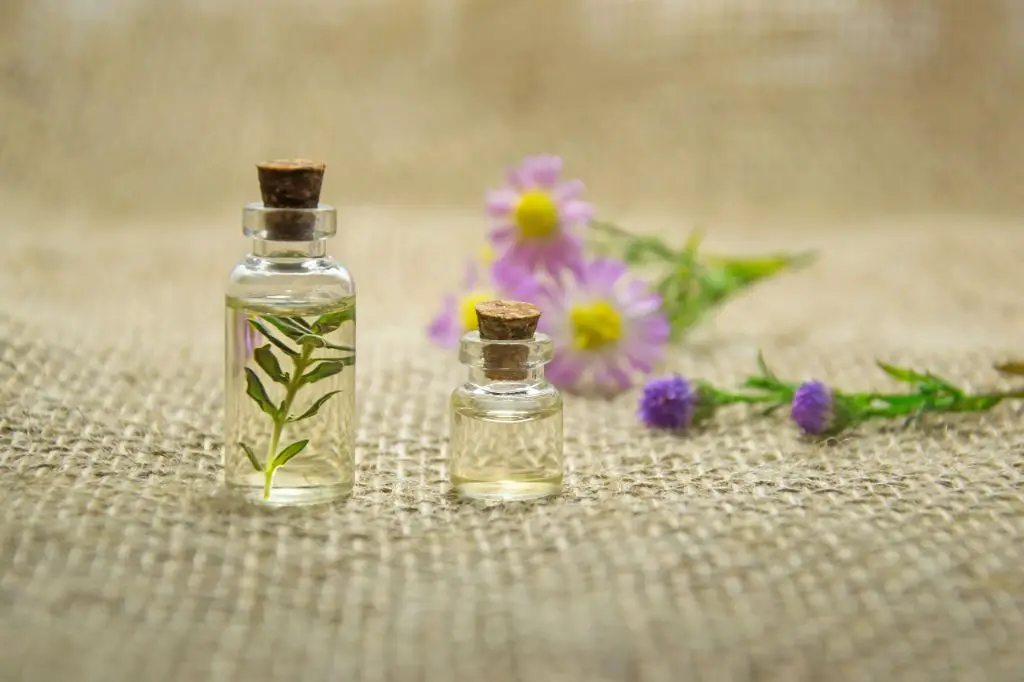Can You Put Too Much Essential Oil In A Candle?
The aromatic scents of essential oils can transform the mood and ambiance of any space. When infused into candles, essential oils provide numerous benefits beyond just creating a pleasant fragrance. Certain scents can promote relaxation, improve sleep, boost focus and concentration, and more. With the rising popularity of aromatherapy, essential oil candles have become a go-to way to enjoy the advantages of essential oils at home.

But with great power comes great responsibility. While essential oils can elevate your candle-burning experience, adding too much can also overpower the scent, compromise the candle’s burn quality, or even create potential safety hazards. Finding the right essential oil ratio is crucial for creating a well-balanced, long-lasting, and safe candle.
This guide will explore how much essential oil is too much in candle making and provide tips for diluting essential oils properly. You’ll learn the science behind scent throw, signs of an overly scented candle, recommended oil dilution ratios, and how to fix a candle with too much fragrance. Let’s dive in!
Basics of Candle Making
Candle making involves combining wax, wicks, and fragrance to create a scented candle. The main ingredients are:
- Wax – The most common candle wax is paraffin, a byproduct of petroleum refining. Other options are soy, beeswax, and palm wax. The wax provides the fuel for the candle flame. https://thehoneycombhome.com/easy-candle-making-for-beginners/
- Wicks – Wicks draw wax up through capillary action and provide a source of fuel for the candle flame. Wicks come in different materials, thicknesses and braiding depending on the wax and container. https://www.dadant.com/catalog/candle-making-basics
- Fragrance – This provides scent to the candle. Fragrances are often essential oils or synthetic fragrance oils blended to the desired aroma.
These ingredients are combined and poured into a container to create a candle. The wick is inserted, then as the wax pool melts, the liquefied wax travels up the wick and provides fuel for the flame.
Role of Essential Oils
Essential oils play two key roles in candle making. First and foremost, they provide fragrance. The essential oils infuse the wax with their aromatic compounds, releasing a pleasant scent when the candle is burned. Different essential oils have different scents – floral, fruity, herbal, spicy, etc. Blending oils allows candle makers to create unique scented candle blends.
Beyond fragrance, essential oils also offer potential aromatherapy benefits. When diffused into the air from a burning candle, essential oils may provide calming, energizing or other effects based on the oil. For example, lavender and chamomile oils are known for their relaxing properties. Lemon and grapefruit oils have more uplifting, energizing aromas. Always check the specific properties of an oil before using it in a candle for aromatherapy purposes (source).
How Much is Too Much?
When making candles with essential oils, it’s important not to use too much or you may run into issues. Generally, essential oils should be kept to 1-3% of your candle wax volume at most. Going above 3% means there is a risk of the fragrance not being able to properly bind with the wax. This can lead to the smell not filling the room adequately or the candle producing more soot than normal.
Adding in too many drops of essential oils, especially potent ones like clove, can be overpowering when the candle is lit. The goal is a nice aroma when the wax melts – not something totally overwhelming. Overloading with essential oils can cause the wax to seize up as well. The extra oils prevent proper mixing and binding.
Sticking within recommended dilution rates is key. While personal preference on strength comes into play, anything above 5% of wax volume starts posing safety issues. The candle may tunnel and not burn properly, releasing more unburned soot into the air. Essential oils are highly flammable and concentrate easily at higher volumes. This makes the candle more prone to flaring up or triggering allergies.
Moderation is key when using essential oils in candles. It ensures a better burn, lighter throw, and reduced risk of issues like soot buildup. Following dilution standards protects the quality and safety of your homemade candle.
Recommended Dilution Ratios
When making candles with essential oils, following the proper dilution ratio is crucial for safety and getting the scent just right. Most experts suggest that a dilution ratio of 1-2% essential oil by weight is ideal for candles.
This means if you are using 1 pound (453 grams) of wax, you would use 4.53 – 9.06 grams of essential oils total. Going above 2% can make the scent overpowering and lead to issues like soot buildup when burning.
A common beginner dilution ratio is around 3-5% but this is not recommended for safe candle making. Always start low at 1-2% scent load for best results.
You can find dilution ratio calculators online that allow you to enter the weight of your wax and see how much essential oil to use based on different percentages. Staying below 2% is the safest bet for great scent throw without issues.
Signs You’ve Added Too Much
Adding too much essential oil to a candle can cause several issues. Here are some signs that indicate you may have gone overboard with the scent:
The fragrance is overpowering and smells chemical-like rather than natural. It’s so strong that it gives you a headache or makes your eyes water.
Wet spots or oil pools on the surface of the wax. The wax struggles to hold the excess oil.
The candle smokes or the wax discolors when you burn it. This happens because the oils are burning off and altering the wax composition.
The flame is smaller than normal or uneven. Too much oil disrupts the wax’s ability to hold a wick properly.
Soot builds up on the candle glass as the oils don’t burn cleanly.
The candle has poor hot and cold throw. You get little fragrance when burning and not much scent even before lighting.
Tunneling or sinkholes form as the essential oils disrupt the structure of the solid wax.
The candle struggles to harden or the wax takes an unusually long time to set up. The oils inhibit wax crystallization.
If you notice any of these issues, you unfortunately added more essential oil than the wax could handle. But the good news is that it can be fixed!
Fixing an Overly Scented Candle
If you’ve added too much fragrance oil to your candle, there are a few remedies you can try to fix it:
Add more wax – Adding more unscented wax is the easiest way to dilute the scent. Carefully melt the existing candle and mix in additional wax, testing the scent until it’s at the desired strength. A good starting point is adding 10-20% more wax. Be careful not to overheat or hold the wax at high temperatures too long when remolding.
Repour just the top layer – For container candles, you can repour just the top 1/4 inch or so with unscented wax to help contain some of the excess fragrance at the bottom. Allow the new top layer to fully set up before burning the candle.
Add baking soda – Stirring in a small amount of baking soda can help absorb some of the fragrance oil. Use 1 teaspoon per pound of wax as a starting point.
Remove some wax – In dire cases, you may need to remove some of the scented wax altogether before adding back unscented wax. This avoids diluting the entire candle.
Let it cure longer – Over time, some excess fragrance will dissipate from the wax. Letting the candle cure for 1-2 weeks before burning can help with over-scenting issues.
Unfortunately, once too much fragrance is added, the options are limited. Taking precautions to avoid over-scenting in the first place is critical.
Safety Precautions
When making candles with essential oils, it’s important to take safety precautions to avoid potential dangers like flames that are too large or soot buildup. Here are some key tips:
Use the proper wick size for the candle vessel and wax type. The wick must match the size of the candle holder and the wax being used so the flame is the right size. An oversized wick can cause large, uncontrolled flames. Find recommendations for wick sizing from reputable candle suppliers.
Choose an appropriate candle holder or vessel. Containers that are too small can lead to overheating and fire risks. Glass and metal containers specifically designed for candle making are recommended over improvised vessels. According to the National Fire Protection Association (NFPA), always place candles in sturdy, noncombustible holders https://www.nfpa.org/education-and-research/home-fire-safety/candles.
Never burn a candle for longer than the manufacturer’s recommendations, usually no more than 4 hours at a time. Longer burn times can cause excessive heat buildup. Trim wicks to 1⁄4 inch before each lighting to reduce mushrooming at the tip and contain the flame size. Allow the wax pool to harden completely before relighting.
Keep candles away from flammable items and out of high traffic areas. Don’t place lit candles near materials like curtains, paper, trees, or clothing. Avoid leaving burning candles unattended. Extinguish candles before going to sleep or leaving the house. Use candle holders that are sturdy and won’t tip over easily.
Top Essential Oils for Candles
Certain essential oils are especially popular for use in candles due to their pleasing scents and safe properties when burned. Some of the best essential oils for candles include:
Lavender – With its floral, herbaceous aroma, lavender is one of the most versatile and commonly used essential oils in candles. It promotes relaxation and tranquility. Lavender blends well with citrus and woodsy scents. (Source: https://www.simplyearth.com/blogs/use-and-tips/best-essential-oils-for-soy-candles)
Eucalyptus – The minty, camphorous scent of eucalyptus essential oil is energizing and cleansing. It helps boost alertness and clear respiratory passages. Eucalyptus works well blended with citrus, pine and woody notes. (Source: https://blog.simplyearth.com/8-best-essential-oils-for-candles/)
Lemon – With its bright, uplifting citrus aroma, lemon essential oil is refreshing and revitalizing. It promotes positivity and improves mood. Lemon blends well with lavender, peppermint and other citruses. Use sparingly as it can fade wax color. (Source: https://www.quora.com/Which-essential-oils-are-safe-in-candles)
Lemongrass – The crisp, grassy scent of lemongrass essential oil is cleansing and purifying. It helps repel insects naturally. Lemongrass combines well with basil, bergamot, peppermint and eucalyptus. (Source: https://blog.simplyearth.com/8-best-essential-oils-for-candles/)
Choosing essential oils based on scent preference and intended ambiance is key. Blending 2-4 complementary oils helps create complex, inviting aromas. Always properly dilute oils to stay within recommended usage rates.
Conclusion
In summary, using essential oils in candles can provide many benefits like aromatherapy, mood enhancement, and natural fragrance. However, it’s important not to overdo it. Follow the recommended dilution ratios, usually around 1-2% of the wax weight. Too much oil can make the candle unsafe, create an overpowering scent, or prevent proper burning. If you do add too much, try letting it cure longer, placing it in a larger container, using it briefly, or adding more plain wax.
Some final tips include: staying within 3-5% dilution for soft or soy wax candles, avoiding extra oils with container candles, testing your blend’s cold and hot scent throw before fully producing it, and keeping wicks trimmed to 1⁄4 inch to prevent sooting from excess oils. Most importantly, take care and follow standard candle safety guidance like keeping away from flammable items and never leaving burning candles unattended. With the right techniques and care, essential oil candles can be a safe, effective way to fill your space with beautiful aromas and reap the benefits of aromatherapy.


